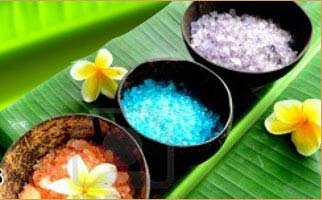 |
Botanical Name |
: |
Cucurbita pepo |
 |
Common Name |
: |
Bundevino ulje, Kernol or Kurbiskernol |
 |
CAS # |
: |
871582-63-7 |
 |
Plant Parts Used |
: |
Seeds |
 |
Extraction Method |
: |
Cold Pressed |
 |
Color & Odor |
: |
light to very dark green to dark red in colour and has
an intense nutty taste |
Description :
Pumpkin oil is viscous and its color ranges from very faint red to bright
red.
Constituents & Specifications :
Oleic Acid, Myristic Acid, Palmitic acid, Palmitoleic acid , Stearic Acid,
Linoleic acid, Linolenic acid, Arachidic Acid, Gadoleic acid and various
vitamins and mineral
Properties :
A lot of antioxidant against the free radicals in the blood helps to keep
young and healthy. It has Omega 3 and Omega 6: also known as essential fatty
acids(EFAs). Also a lot of phytosterole which is well known for a positive
effect against high cholesterol.
Benefits & Uses :
- It is used as a cooking oil , it can be serves as a salad dressing
when combined with honey or olive oil. Drizzle the oil on pasta,
rissotto, soups, stews, steamed vegetables, cooked meats, cold meats and
vanilla ice cream.
- The oil is rich in fatty acids, which are good for the joints.
- The oil is rich in vitamins A, B1, B2, B6, C, D, E and K.
- The oil is rich in minerals, including Magnesium and Calcium.
- The use of pumpkin oil prevents the occurrence of benign prostatic
hyperplasia. It also aids in the treatment of the same.
- It has been scientifically proven that pumpkin seed oil regulates
blood cholesterol, thereby reducing the risk of heart ailments.
![]()
![]()



![]()
![]()